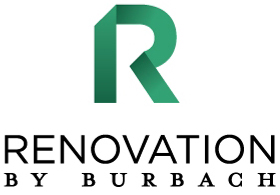There is no way to hide it, the first thing anyone notices when they look at your home is your siding. It is also your first line of defense against external agents like wind, dust, and rain. And while other materials like Hardiplank, vinyl, or veneer can be cheaper and still look good, they require constant maintenance and repairs — not to mention everyone else uses vinyl.
So the only choice for homes that want durable siding with a distinct look is between Stucco and brick.
What is Stucco?
Stucco is made from a mixture of cement, sand, water, and sometimes lime. It is usually in the form of a thick liquid before it is applied. You often lay stucco over an existing frame that could be made from concrete blocks or bricks.
Pros of Stucco Siding
- Affords a versatile and modern design
- Has a lifespan of 50 years or more
- Best in hot and dry regions
- More affordable than a brick installation
Cons of Stucco Siding
- Takes longer to dry
- Vulnerable to cracks and require more maintenance
What is Brick?
Bricks are tiny blocks made from burnt clay. They often turn out in different shades of red. Several brick blocks must be arranged manually to create the structure you want.
Pros of Brick Siding
- Timeless Aesthetics
- Requires low maintenance
- Extremely durable and can last centuries
- Holds its value over time
- Most comfortable in harsh weather
Cons of Brick Siding
- Limited color options
- More expensive to install
Direct Comparison between Stucco and Brick
Appearance
Brick always has an air of elegance and reliability. It is classic, timeless, and doesn’t require painting. You are also pretty limited to the different shades of red that come with the brick.
Stucco, on the other hand, is very versatile. You can paint it with any selection of colors you fancy. And make them in different patterns and styles to give your home a distinctive look. This can be changed later to keep up with newer designs you wish to explore.
Cost
While stucco is by no means a cheap siding choice, brick can get pretty expensive. Stucco materials cost between $1000 to $2000 per 1000-square foot of the wall. And then you have the labor cost, which depending on the current rates and your location, can set you back between $35 and $50 every hour.
It takes an average of 3-5 days to complete stucco installation. And painting will set you back another $750 to $900. The total cost ends up between $2500 and $4500 for stucco installation.
Brick costs between $8 and $10 per square foot. Then you have to add the mortar price separately, which goes between $250 and $500 for the installation. The installation takes more time, as the bricklayers have to install the bricks one piece at a time. They will charge about $70 an hour. The total costs often add up to about $9,000 to $12,500 for brick installation.
Maintenance
Both materials absorb moisture pretty easily. This means there is a high chance of mold and moss growing on your sidings. Brick is more susceptible to this as paint often protects stucco. This means that brick has to be cleaned fairly regularly.
Stucco gets cracks over time since it doesn’t get enough room to breathe or space to expand with the season. Stucco will also require repainting over time, around every 10 years, as the paint fades. Regardless, these two materials offer the lowest maintenance in sidings.
Durability
Both materials age differently under various conditions. Stucco will develop cracks in tremor zones where the house shifts on the soil. But Stucco is better adapted to temperate and dry areas where it stands well against dust and resists termites.
Brick can take colder weather and remains intact under earth vibrations.
Both materials are strong and long-lasting. However, a well-installed stucco siding has a predictable lifespan of about 50 years. And brick is known to last even longer in the right climate. It will last centuries if properly installed and maintained.
Safety and Protection
While they are both great at keeping things out, brick is better at keeping the heat in. It edges stucco out in insulation against cold weather. Brick also keeps cool when the weather is hotter, thanks to its ability to let moisture flow in and out.
Brick also has a better heat resistance and easily contains fire in case of an outbreak. Stucco is more susceptible to such situations.


